Blood Red Skies is, primarily, a game about manoeuvrability. In these fast and frenetic dogfights, positioning is key; not only in terms of your aircrafts’ placement on the tabletop but in their elevations relative to their opponents. In Blood Red Skies, this is achieved through the dynamic ‘advantage system’. In this article, we’ll guide you through the core game mechanics in preparation for the brand-new Battle of Midway starter set.
Advantage is Key
Each aircraft in Blood Red Skies is mounted on an advantage base that can be set to three different levels, representative of the aircraft’s game state. Advantage can be “burned” to gain increased movement or manoeuvrability. Such bursts of speed are key to get behind your opponents to force them to become vulnerable (known as tailing).
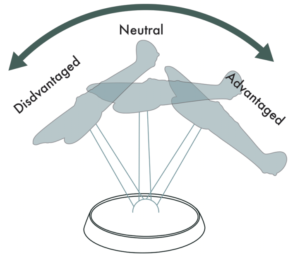
Pilots should not be too liberal in “burning” advantage, however, as crucially it is only disadvantaged aircraft that are susceptible to being shot down.
Advantage also dictates the order in which aircraft are activated each turn. Advantaged planes will always activate first (in descending pilot skill order), followed by neutral aircraft, and finally disadvantaged aircraft.
Aircraft Stats
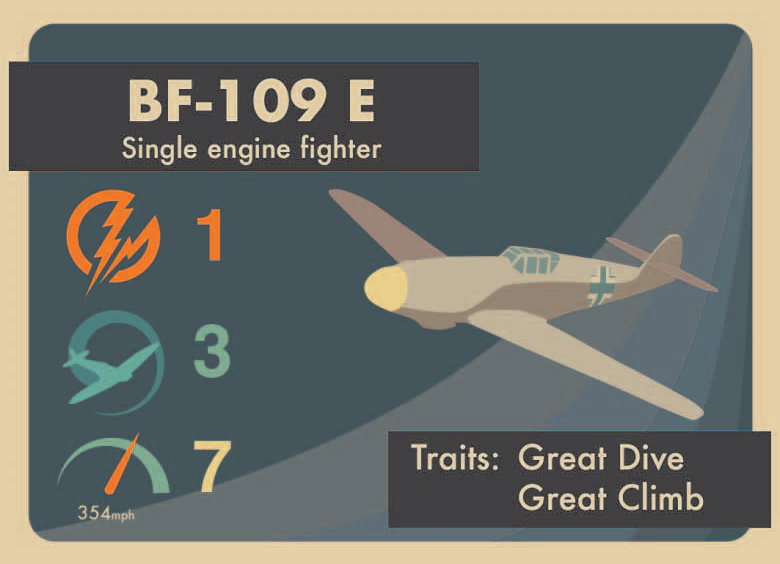
Firepower

The Firepower characteristic is a representation of the plane’s forward-firing armament in terms of accuracy, range, ammunition, and reliability. Firepower for each aircraft is rated from nothing at all up to three, with nothing being the lowest, and 3 being the highest.
Agility

The Agility characteristic represents how nimble a plane can be in the air. Its acceleration, turning radius, climb, dive, and roll rate, plus stall characteristics, are reproduced in one, handy number. Agility for each aircraft is rated zero to three, with zero being the lowest, and 3 being the highest:
Speed

The Speed characteristic represents an aircraft’s top speed. It is expressed as a maximum distance, in inches, that the model can move across the tabletop in one game turn (e.g. 8 inches in one turn). The conversion rate is each 50mph of real-world speed (rounding to the nearest) = 1″ of tabletop speed.
Activating Aircraft
In the action phase, activate fighters, one at a time, in turn order (most skilled first within each advantage category, any ties in pilot skill are broken by speed). Complete all the actions of one plane before moving on to the next.
When a plane is activated, it takes the following actions, in this order.
1. Shoot You can shoot an enemy plane that is in your front arc within 6″ and is at a lower advantage level.
2. Burn advantage You may choose to burn (lose) one advantage level to perform one of the following options:
- Manoeuvre: Make up to a 180° turn at any point in your move (this replaces the normally allowed 45° turn).
- Dive: Add 6″ to your maximum speed this turn.
3. Move Move your aircraft straight ahead up to its maximum speed, then you may turn up to 45°. You must move it at least half its maximum speed, rounding up to the nearest inch.
4.Pilot Action After you complete your move, you may choose one pilot action from the following options:
- Shoot: You may shoot an enemy plane that is in your front arc, is within 6″, and is at a lower advantage level.
- Outmanoeuvre: You may attempt to reduce an enemy plane’s advantage level by one (see below).
- Climb: Raise your own advantage level by one.
5.End Activation
Finally, place a zoom marker on the fighter’s base to show it’s taken its turn.
Tailing
A pilot was at his most deadly when he got in close range to the rear quarter of an enemy. From here it was much easier to follow the target’s moves and deliver deadly-accurate gun attacks.
Ending movement with a plane pointing directly at an enemy plane within its rear arc and within 6″ counts as “tailing”, and reduces the enemy plane to a Disadvantaged state immediately.
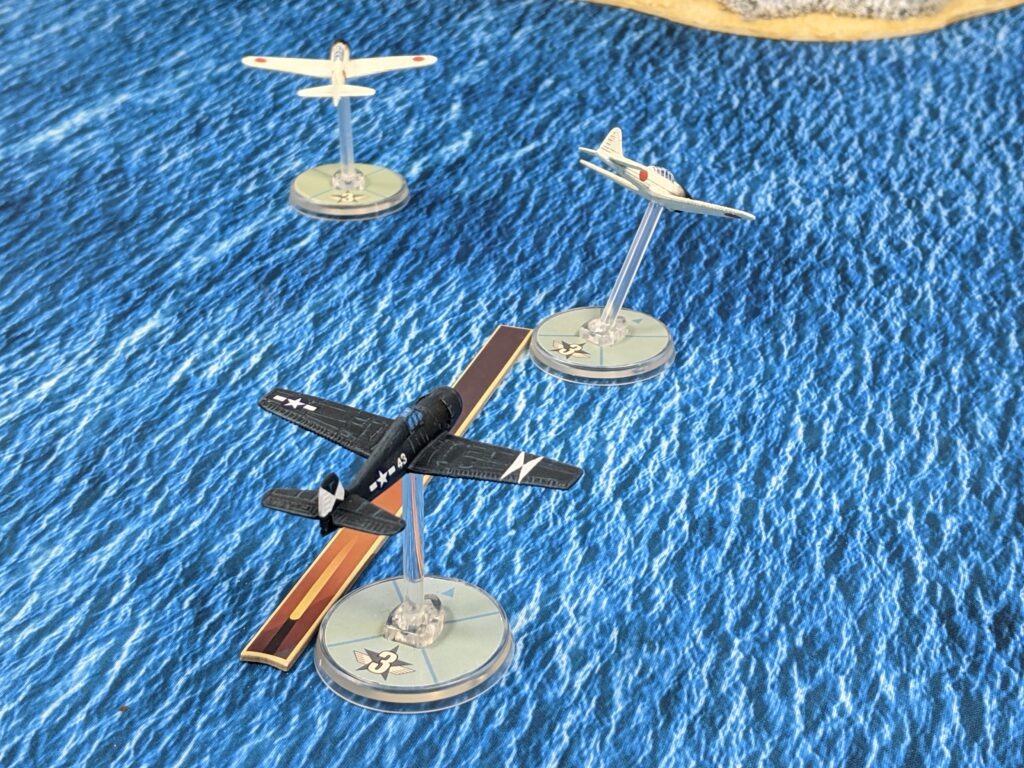
There is no ongoing effect from tailing once the tailed plane has been Disadvantaged, and it only comes into play when a plane ends its move and before it takes its pilot action (so you can’t Climb for Advantage and then claim a tailing position). A plane can only claim to be tailing one enemy plane per turn. Tailing is most commonly used to set up an immediate shooting attack.
Shooting Actions
Fighters carried a heavy, forward-facing armament of machine guns and automatic cannon to shoot down enemy aircraft. The high engagement speeds of fighters made it essential to do enough damage to down an enemy plane in just a few seconds of accurate fire.
All aircraft have a shooting range of 6″. Ordinarily, the target must be in the forward 90-degree arc of the firing plane. To perform an attack, the attacker rolls a number of dice equal to his pilot skill plus the firepower stat. If at least a single success is rolled, a hit has been scored. If multiple successes have been rolled, the hit is critical.
Once a hit is scored, the defender rolls a number of dice equal to his pilot skill plus the aircraft’s agility. In the case of a critical hit, the total number of dice rolled is reduced by one. If at least one success is rolled, the hit has been dodged. If the hit is not dodged, the target immediately loses an advantage level; if it was already disadvantaged, the plane is shot down!
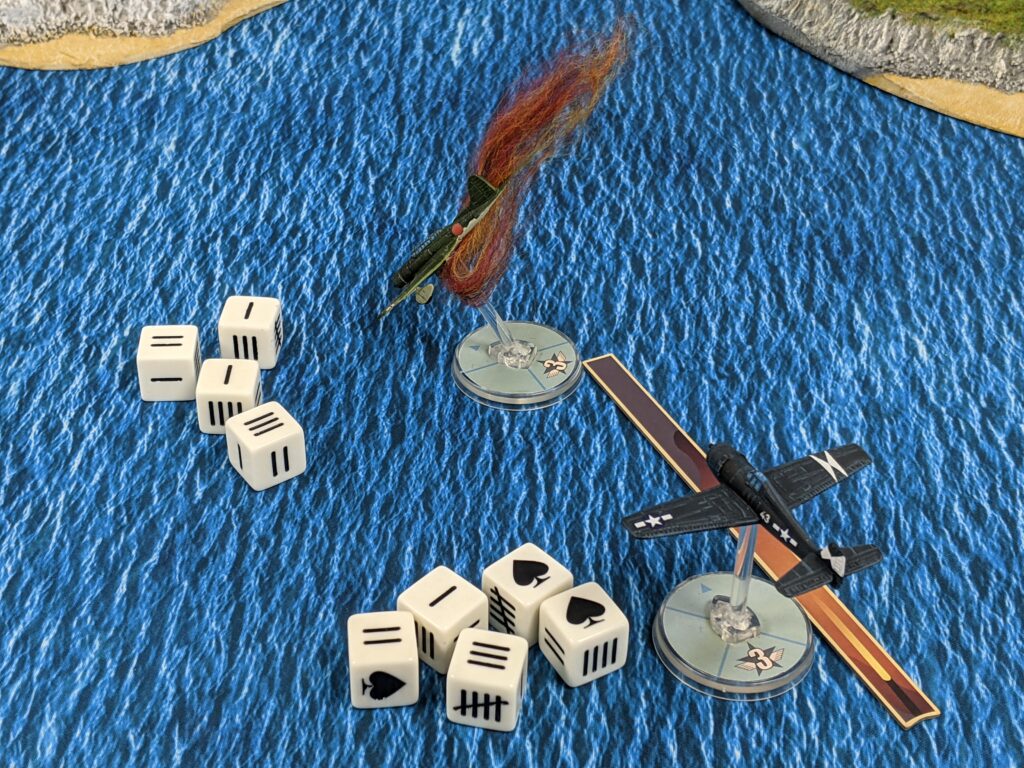
Shooting Positions
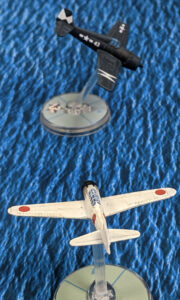
Shooting attacks are often influenced by the relative positions of both the shooter and its target. This is represented by the following two special shooting situations.
Deflection Shooting
Shooting a target from the sides is considerably more difficult. In these cases, the target can opt to use their aircraft’s Maximum Speed value instead of Agility to add to their Pilot Skill when calculating the number of dice rolled to dodge shooting attacks.
Head-on Attacks
Head-on attacks could be highly effective during WWII, but were always risky. A shooting attack that comes at the front arc of the target is called a head-on attack. In this case, the target is allowed to counterattack by shooting back regardless of their advantage state. The effects of these attacks are simultaneous, so even if the target is shot down they still have the opportunity to return fire.
Outmanoeuvre Action
By using the right manoeuvres, a pilot can set up an enemy for an attack. This could be by adopting an angle of attack that forces the foe onto the defensive, acting as a decoy to lure attention away from a blindside attack, sneaking up on an enemy unseen beneath their wing or tail, hiding in the sun or any other of a host of other tricks of the trade. However the manoeuvre is achieved the enemy will be put on the defensive if they aren’t skilled enough to escape the trap.
To perform the action select an enemy fighter within 9″, regardless of respective facing arcs and advantage levels, and compare its pilot skill to your own. If the target has a lower pilot skill, the outmanoeuvre attempt automatically succeeds. Otherwise, the target makes a manoeuvre test by rolling a number of dice equal to its pilot skill plus its agility. A single success nullifies the outmanoeuvre attempt.
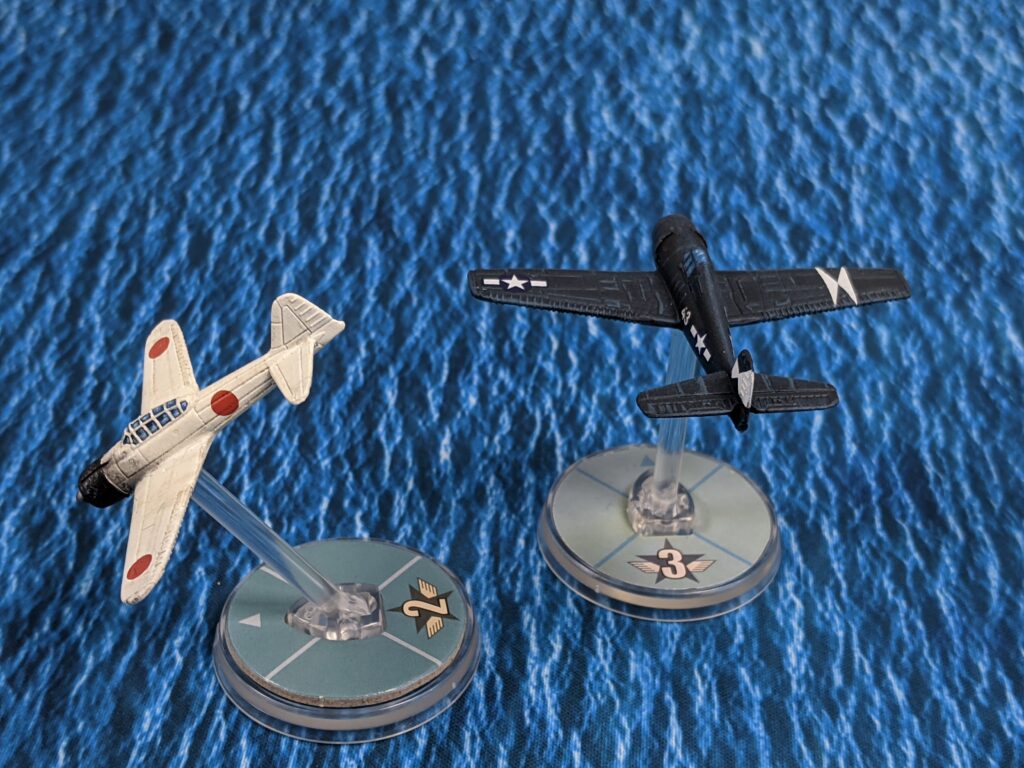
An outmanoeuvred plane immediately decreases its advantage level by one.
That’s the Basics
It’s as simple as that. In a basic dogfight, each time a hit is scored (whether dodged or not), the targeted player receives a Boom Chit. A player will also receive a Boom Chit each time one of their aircraft is downed. When a player has a number of Boom Chits that exceeds their total remaining aircraft, their aircraft will disengage at the end of the game round. The battle is not necessarily lost though; that player still has a slim chance to recoup a draw or even snatch a victory so long as they can force their opponent to accumulate enough boom chits to similarly disengage within the remainder of that game turn.
Once you have a few sorties under your belt, then you’ll find a little more in the Expanded Rules. Here you can introduce the Action Deck to augment your squadrons, a collection of cards that can be played during the game to represent the impact of signature aircraft traits, unique national combat doctrines and the challenges and opportunities provided by various theatres of war. The effective use of these cards will often be the difference between glorious victory and shattering defeat. We’ll delve more into these in a future article.
Battle for Midway Starter Set
The Blood Red Skies: Battle of Midway starter set contains everything you need to get playing, including rules, tokens, dice, game cards, and crucially 12 highly detailed Warlord Resin aircraft with which to battle.
Full Contents:
- 12 x Warlord Resin aircraft (6 x Mitsubishi A6-M2 Zero & 6 x Grumman F4F Wildcat)
- 12 x BRS Advantage Flying Bases
- 2 x BRS Midway punchboards
- 1 x BRS Plastic Token Sprue
- 1 x BRS Battle of Midway Rules Booklet
- 1 x BRS Quick Reference Card
- 6 x Aircraft Cards (Douglas Dauntless, Douglas Devastator, A6-M2 Zero, Aichi D3A ‘Val’, Nakajima B5N Kate & F4F Wildcat)
- 6 x Aircraft Trait Cards
- 17 x Doctrine Cards
- 18 x Theatre Cards
- 12 x BRS Combat Dice
- 1 x USN/IJN Self-adhesive sticker sheet
- 1 x USN/IJN waterslide decal sheet
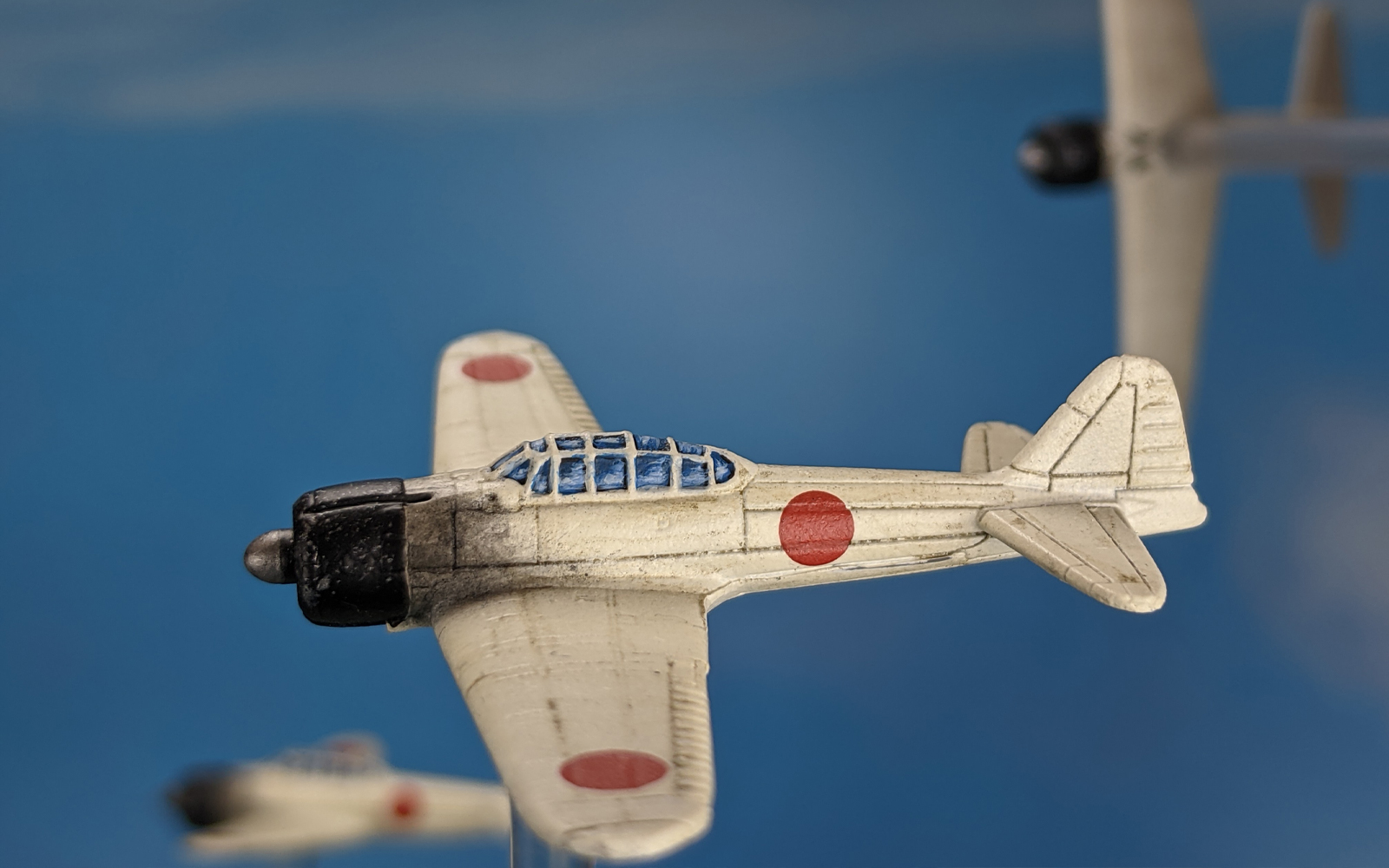
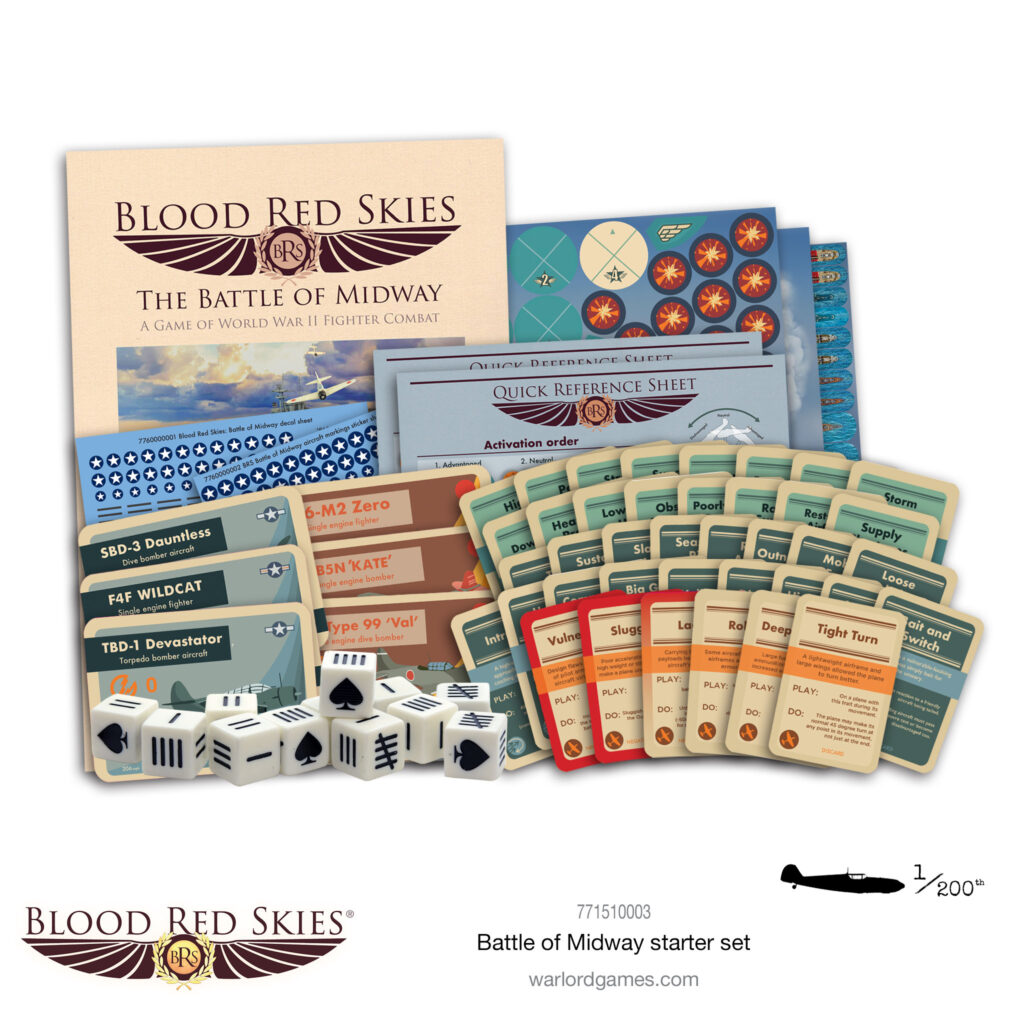
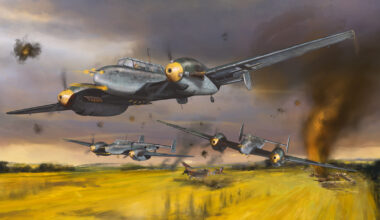
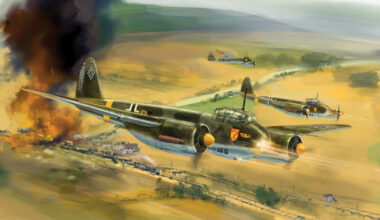
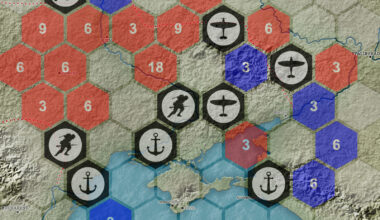
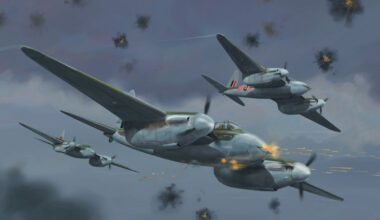
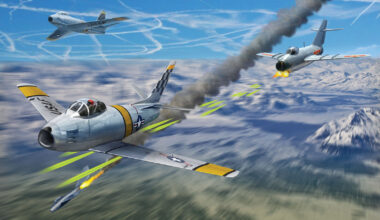
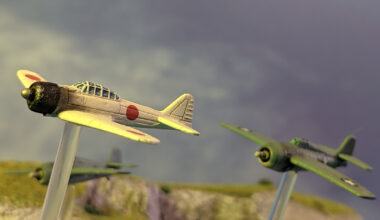
5 comments
This article is very unclear about boom chits. The picture description in “The Hellcat fires at the Val” says a boom chit is only awarded when a plane is shot down, but that would be a major rule change. In the rules as published to date, any hit gives a boom chit to the target’s squadron; a a failed Dodge roll on a Disadvantaged aircraft is a shoot-down and an additional boom chit is awarded.
Thank you for your comment. You are correct, and there is no major rule change for Boom Chits. The article will be edited for clarity.
Great article – more please
btw Game end is at the end of the turn not immediately
You have the Victory conditions different in this article to the existing rules.
In here you say “When a player has a number of Boom Chits that exceeds their total remaining aircraft, the game ends immediately, with that player withdrawing in defeat.”
In the current (Airstrike!) rules it says you play till the end of the turn and then see who is driven off.
Good spot. This hasn’t changed. Article updated. Thanks.
Comments are closed.